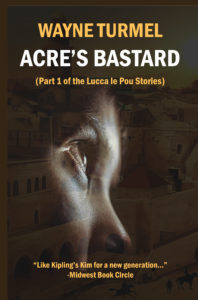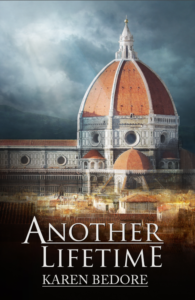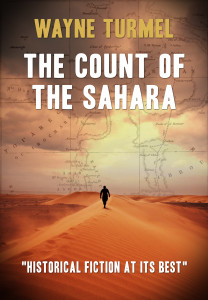Anyone who knows me, knows I hate New Years Eve. Always have. The week between Christmas and New Years is traditionally a time of self-flagellating reflection, semi-soul-numbing-regrets and non-clinical depression. That generally comes complete with a lot of whining and binge-eating the remaining butter tarts. With the Duchess working retail, and my customers inconsiderately on vacation, I have too much time to think about stuff. Nothing good happens when Wayne starts a sentence with, “I’ve been thinking.”
This year is (slightly, ever-so-slightly) different though.
For example, this year my resolution is to save more money. One way I am going to do this is by using more coupons and promo codes when shopping online. You see, one of my friends has been encouraging me to get into couponing for some time now and I have decided that I need to make some major changes to my spending habits, especially as we have a big move planned very soon.
We do most of our online shopping on the Target website so my friend has sent me a target coupon to get me started. To be honest, I was surprised by how much money you can save by using promo codes. I had never even thought about using coupons when shopping online, but this year is going to be different. Are you a fan of couponing? Or, do you have any other money-saving tips? Let me know your thoughts if so.
By the way, this is not a request for “attaboy” Facebook messages or offers of assistance or your therapists’ contact information. I go through this every year and come out the other side. It’s just a way of setting up what I have to say next.
As I look forward to 2018, there are three things to look forward to.
- In May, the release of “The Long-Distance Leader: Rules for Remarkable Remote Leadership.” Co-written with my boss and friend, Kevin Eikenberry, this is a very real book from a real publisher and the hope is that it will kick-start the whole
 “paying the rent” thing. It’s available for Pre-Order now. Just saying.
“paying the rent” thing. It’s available for Pre-Order now. Just saying. - This summer will see the release of “Acre’s Orphans”, the second story in the Lucca series. I’m guessing August? I had hoped to have it out by now, but hubris is a terrible thing. “How hard could it be to do a world-class business book AND the next novel in the same year?” I can now answer that: way more than I thought. For those of you awaiting the next adventure. It’s coming. By the way, I killed off someone major in Chapter 15. Can’t wait to hear the complaining…..

- After 17 years in Chicago, the Duchess and I are planning to leave Chicago for Las Vegas. Now, I’m well aware that if you want to hear God laugh, tell Her your plans, and nothing is set in stone. Still, that’s the plan. No more frigid winters. And it’s time to start the next chapter of our lives. I love Vegas but that’s not to say I won’t miss living in Chicago. I’ve been playing on some of the best online slots UK websites to try and improve my gambling skills and I’m slowly getting better. I can already tell I’ll be spending a lot of time in the casinos haha. The casinos are a huge perk of living in Vegas, but I’m fine with playing online for now. I feel like many people come to Vegas for the culture and not the gambling. In fact, now luxury casinos can be found in Japan, it’s no longer the sole selling point of Vegas. That being said, I’m still going to try my luck. Hopefully, I’ll be able to win some money to fund the move. It will be interesting to see how the introduction of modern developments in the casino industry will affect the standing of Las Vegas in the gambling landscape. For instance, Bitcoin casinos are increasingly becoming the hottest trend. Those interested should check out this article to learn more about them – https://savedelete.com/gaming/the-difference-between-a-bitcoin-casino-and-a-regular-one/203935/. It might be a good way for me to make a bit of money so could be worth looking into! Of course, if anyone wants to buy a few copies of my books to help fund the move, we’d appreciate it. While I love Chicago, and Her Serene Highness will be staying behind, it’s either move or be murdered in my sleep by a woman raised in Miami and still pining for Los Angeles after all these years. I’m already packing boxes.

You never really know what a year holds, but I am excited for the challenges I know I (and we as a family) will face.
My own self-absorbed whinging aside, I wish for you an exciting 2018 of chasing your dreams and fighting the weasels to at least a draw.


 On a typical day, one could find Karen in the throngs of adolescent wonderment, trying to create harmonious music-making to these next-generation superstars. From the first squeaks of “Hot Cross Buns” to the lavish lyrical sounds of “Danny Boy,” there is much magic that occurs within the four walls of the band room.
On a typical day, one could find Karen in the throngs of adolescent wonderment, trying to create harmonious music-making to these next-generation superstars. From the first squeaks of “Hot Cross Buns” to the lavish lyrical sounds of “Danny Boy,” there is much magic that occurs within the four walls of the band room. remember. The humanism movement—especially in Italy—has transformed the visual and musical art world, and I wouldn’t be where I am today without that ingenuity. I have family roots in Italy as well, and am in love with the language and culture. If I were a character, I would be Aria. Many people who have read the book have noticed that I pretty much inserted myself into the book.
remember. The humanism movement—especially in Italy—has transformed the visual and musical art world, and I wouldn’t be where I am today without that ingenuity. I have family roots in Italy as well, and am in love with the language and culture. If I were a character, I would be Aria. Many people who have read the book have noticed that I pretty much inserted myself into the book. Jocelyn has a Ph.D. in Creative Writing from Florida State University and is currently the Director of Creative Writing in the BFA Program at Truman State University. She lives in Columbia, Missouri with her husband, the film scholar Prakash Younger, and their two daughters.
Jocelyn has a Ph.D. in Creative Writing from Florida State University and is currently the Director of Creative Writing in the BFA Program at Truman State University. She lives in Columbia, Missouri with her husband, the film scholar Prakash Younger, and their two daughters.




 When not spending time with his family, teaching, playing hockey, and enjoying the outdoors, he continues to research and write. A series of new releases are planned for the future.
When not spending time with his family, teaching, playing hockey, and enjoying the outdoors, he continues to research and write. A series of new releases are planned for the future. love exploring how local history is intertwined with national events. And I have always been drawn to history of the American West. So, throughout my life, I have contemplated how my little corner of the world developed over time. My family has some property in the Greenhorn Mountains of Kern County. The area witnessed its own gold rush in 1853 and 1854.
love exploring how local history is intertwined with national events. And I have always been drawn to history of the American West. So, throughout my life, I have contemplated how my little corner of the world developed over time. My family has some property in the Greenhorn Mountains of Kern County. The area witnessed its own gold rush in 1853 and 1854.
 Writer, mad cake lady, re-enactor, historian.
Writer, mad cake lady, re-enactor, historian.


 available for pre-order. It’s from Berrett-Koehler publishers, and we couldn’t be happier, both with the book and our partnership with B-K.
available for pre-order. It’s from Berrett-Koehler publishers, and we couldn’t be happier, both with the book and our partnership with B-K.

 Anthony (Tony) Cleveland is an Associate Professor of Psychology at Jackson College in Jackson, Michigan. He has a B.S. In Chemistry from the University of Toledo and an M.A. In Counseling Psychology from Moody Theological Seminary – Michigan.
Anthony (Tony) Cleveland is an Associate Professor of Psychology at Jackson College in Jackson, Michigan. He has a B.S. In Chemistry from the University of Toledo and an M.A. In Counseling Psychology from Moody Theological Seminary – Michigan. about are my ancestors. I wanted my grandchildren to know of the sacrifices their ancestors made in coming to America and the importance their faith made in that endeavor. The book, of course, is historical fiction. I attempt to weave together an imaginative yet informative blend of history and myth, fact and fiction, that will help guide them through their lives after I am long gone. I do pray reading this work will help them remember not only the history of their ancestors but of our nation. God willing, it will somehow inspire them to stay strong in faith, follow the teachings of Jesus of Nazareth, and, ultimately, “run the race well”.
about are my ancestors. I wanted my grandchildren to know of the sacrifices their ancestors made in coming to America and the importance their faith made in that endeavor. The book, of course, is historical fiction. I attempt to weave together an imaginative yet informative blend of history and myth, fact and fiction, that will help guide them through their lives after I am long gone. I do pray reading this work will help them remember not only the history of their ancestors but of our nation. God willing, it will somehow inspire them to stay strong in faith, follow the teachings of Jesus of Nazareth, and, ultimately, “run the race well”.